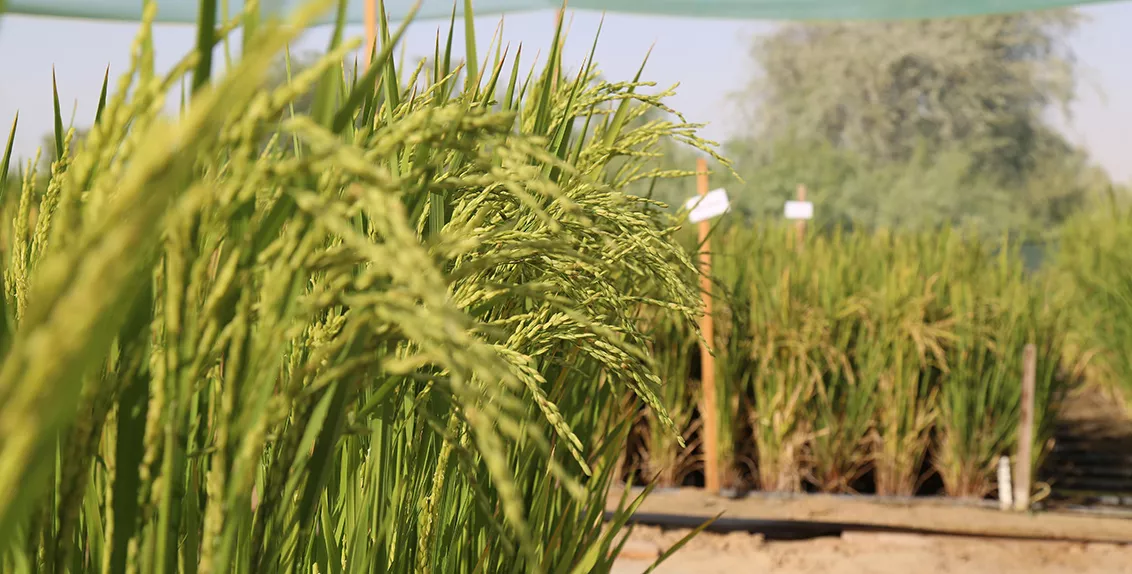ICBA begins trials of salt-tolerant rice varieties in desert conditions
Scientists at the International Center for Biosaline Agriculture (ICBA) have started a set of trials to study water requirements of several highly salt-tolerant rice varieties under desert conditions.
The replicated trials are being conducted using three irrigation methods: sub-surface drip irrigation without plastic lining; sub-surface drip irrigation with a sealed iron sheet at the bottom (a weighing-type lysimeter); and surface drip irrigation with plastic lining.
As part of the trials at the center’s experimental station in Dubai, scientists will assess the adaptability of the varieties to the local conditions and determine the best irrigation method.
The varieties come from the Bangladesh Rice Research Institute (BRRI) and include BRRI dhan 47; BRRI dhan 61; BRRI dhan 67; and BRRI dhan 78. They can tolerate a salinity level of 12 deciSiemens per meter (dS/m) at the germination stage and of about 10 dS/m at the flowering stage – the two stages at which rice is most susceptible to salinity.
While rice is considered a water-intensive crop, it uses only a part of the water allocated for its cultivation. This means rice can be irrigated with smaller amounts of water as well.
According to Dr. R. K. Singh, Program Leader on Crop Diversification and Genetics at ICBA: “Rice usually grows in waterlogged conditions because of aerenchymas in its leaves (pores in the leaves that are connected to roots to respire). This allows the roots to respire in waterlogged conditions, while most of the other plants do not have this capacity. As per the general notion and literature, 1 kilogram of paddy-grown rice requires about 3,000-5,000 liters of water in normal soils (clay and silty loams). Indeed, it is a misconception as a major share of the water is leached out and rice plants utilize only a part of it.”
Dr. R. K. Singh added: “Rice ecosystems do not need strictly waterlogged conditions, which means we can also grow rice with less water. Rice can be cultivated as other crops using a frequent need-based irrigation approach. In view of this, we are evaluating during these preliminary trials different irrigation methods for growing rice and hope to identify the most efficient method for rice cultivation.”
The saplings of the varieties were planted in mid-November 2020, and the harvest will begin in April 2021. Scientists are using fresh water to select the optimum irrigation method and multiply the seeds. A large-scale experiment using different salinity levels will be carried out during the following season to choose the varieties suitable for the UAE and other countries with similar environmental conditions.
The varieties used in the trials are photo-insensitive and may take 120-135 days from seeding to maturity. They are preferred in many countries in South Asia, particularly Bangladesh.
